
Digiplexis, annual Foxglove: planting and care
Contents
Digiplexis in a nutshell
- This is a hybrid perennial plant that closely resembles a foxglove
- Not very hardy, it is grown as an annual
- From May to November, it produces tall spikes covered in colourful flowers
- It is easy to grow in fresh, well-drained soil, in partial shade
- It adds structure to flower beds, borders, and containers
The word from our expert
The Digiplexis is a slightly hardy perennial plant born from the hybridization of the Purple Foxglove (Digitalis purpurea) and its cousin, the Canary Island Foxglove (Isoplexis canariensis). This hybrid foxglove combines the qualities of both parents, only better: vigorous and endless flowering, along with lush vegetation. It bears opulent upright spikes, densely adorned with flowers in even more flamboyant hues than those of traditional foxgloves: bright orange in ‘Firecracker’, orange-red-pink in the Digiplexis ‘Illumination Flame’, apricot, or raspberry pink in ‘Berry Canary’.
The only drawback is its sensitivity to cold! Though perennial, it is only slightly hardy (down to -10°C in well-drained soil), so this hybrid Digitalis is most often grown as an annual. It is easy to cultivate in the garden or in pots, which can be moved indoors in winter. Plant it in partial shade in well-drained, ordinary soil that remains moist during flowering.
Discover this impressive, exotic, and colourful annual foxglove!
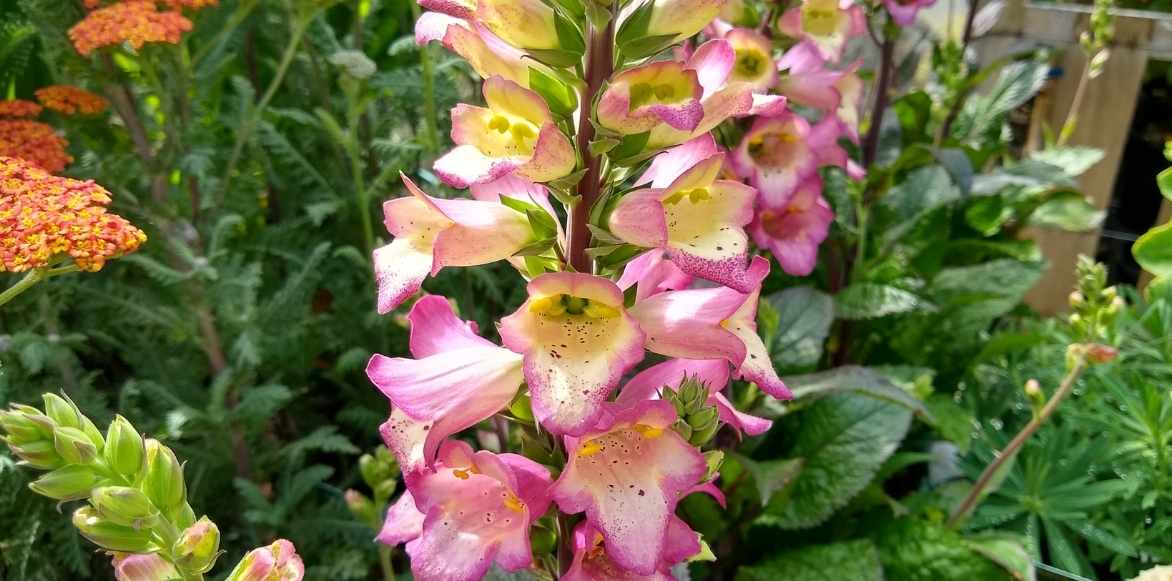
Digiplexis ‘Berry Canary’
Description and Botany
Botanical data
- Latin name Digiplexis
- Family Scrophulariaceae
- Common name annual foxglove
- Flowering May-June to October-November
- Height 0.70 to 1 m
- Exposure Sun, partial shade
- Soil type Light, fresh, well-drained
- Hardiness -8-10°C
The Digiplexis is a herbaceous perennial plant from the Scrophulariaceae family. It is the result of hybridization between our common foxglove found in woodland edges, the purple foxglove (Digitalis purpurea), and the Canary Island foxglove (Isoplexis canariensis). Like its cousins, the foxgloves, it belongs to the Digitalis genus, which includes around 20 species of biennial or short-lived perennial plants native to Europe, North Africa, and Asia. It is often classified among foxgloves, to which it is very closely related. Created in 2006, this horticultural hybrid (digitalis x valinii) by the English seed company Thompson and Morgan has produced around ten hybrid varieties, such as the ‘Illumination’ series.
Less cold-resistant than the foxglove, it is not very hardy (down to -10°C in well-drained soil), and its lifespan is quite short, which is why it is usually grown as an annual in our gardens.
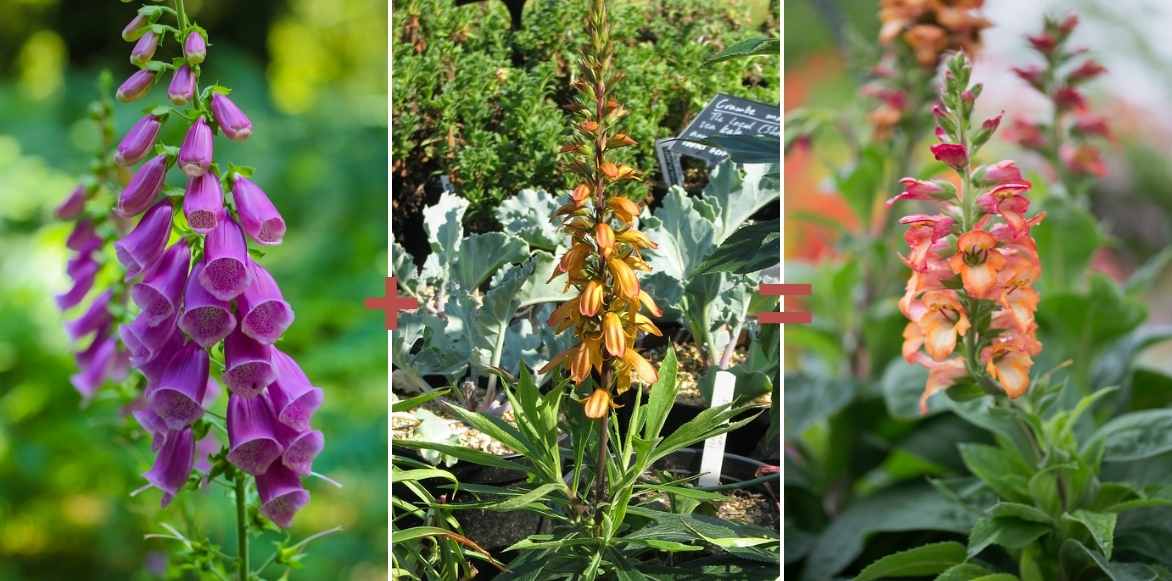
The Digiplexis is a cross between Digitalis purpurea (left) and Isoplexis canariensis (© Peganum), in the centre.
With very rapid growth, the plant develops a rosette of lanceolate leaves 30 to 40 cm in diameter. It forms a graceful yet vigorous clump, with an upright and bushy habit depending on the species and age of the plant. The deciduous foliage is thick, glossy green, slightly hairy on the underside, reminiscent of foxgloves. The leaves, 10 to 20 cm long, are dentate along the edge of the lamina and have very pronounced veins, giving them a crinkled appearance. They are arranged alternately along unbranched stems. Their size and number decrease towards the upper part of the flowering stem, becoming sparser and less dense, with shorter petioles.
From each vigorous rosette of leaves emerge hollow but sturdy flowering stems that rise 70 cm to 1 m in height, depending on the variety. From May-June to October-November, without interruption, the majestic flowering unfolds. The hybrid foxglove bears long, very dense spikes, leafy at the base, adorned along their entire length with a multitude of large tubular flowers 4-5 cm long. Each corolla opens widely into four petals fused only at the base (two large petals at the top and bottom and two smaller lateral petals). Inside the corolla tube lies a small bouquet of stamens.
Warm and bright pink in the Digiplexis ‘Berry Canary’, a fuchsia and orange blend in the Digiplexis ‘Illumination Flame’, yellow-orange with a hint of salmon in ‘Firecracker’, the flower colours, often warmer and more vibrant than those of foxgloves, contrast against the lush foliage. The throat is speckled with small dots or random shapes in contrasting hues or even veined.
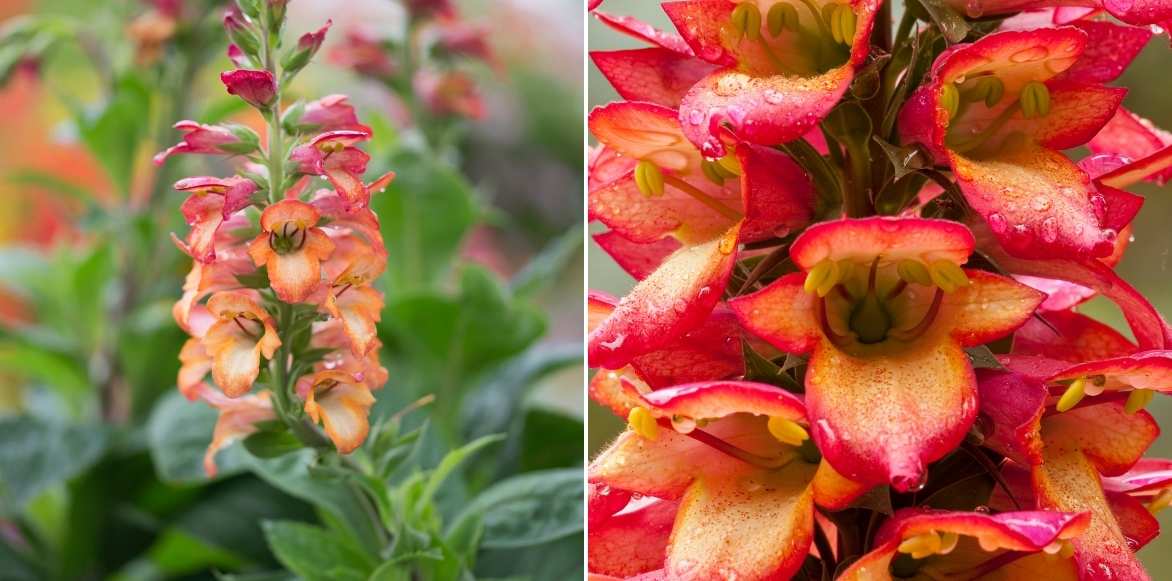
Digiplexis ‘Illumination Flame’
Though not fragrant, they are highly melliferous and attract a multitude of butterflies, pollinating insects, and bees. These hybrid foxgloves are sterile and do not produce fruit, making them exceptionally floriferous!
Main varieties
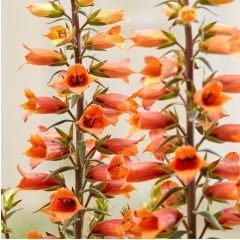
Digitalis valinii Firecracker - Foxglove
- Flowering time July to November
- Height at maturity 75 cm

Digiplexis Berry Canary - Hybrid Foxglove
- Flowering time July to November
- Height at maturity 70 cm
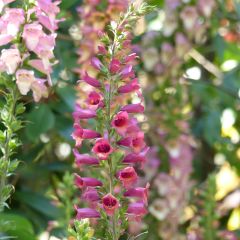
Digitalis valinii Illumination Raspberry - Foxglove
- Flowering time July to November
- Height at maturity 1 m
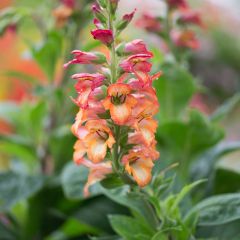
Digitalis valinii Illumination Flame - Foxglove
- Flowering time July to November
- Height at maturity 1 m
Discover other Digiplexis
View all →Available in 0 sizes
Available in 2 sizes
Available in 2 sizes
Available in 1 sizes
Available in 1 sizes
Available in 1 sizes
Planting Digiplexis
Where to Plant It?
Unlike foxgloves, Digiplexis is a plant that is not very hardy (down to -10°C in well-drained soil). It will be grown as an annual and will perform best in mild and rather cool climates, as it dislikes drought. It can be cultivated as a short-lived perennial (typically living 4-5 years) in the south of France. In cooler regions, plant it in full sun, while in the south, it will prefer partial shade to preserve its flowering. To keep it from one year to the next, you can store it in a pot sheltered from severe frosts.
Digiplexis thrives in light shade, in soil rich in organic matter, moist during flowering, and well-drained. It is a greedy plant that will not flourish in poor soil. The ideal substrate is woodland-type soil. In mild regions where it remains in the ground, avoid heavy, clay soils that stay wet in winter, as they can cause root rot.
It appreciates being sheltered from strong winds, which can bend its stems. Since it tolerates root competition, it can be planted at the edge of a shrub border, at the foot of a hedge. It will also thrive in the heart of a perennial bed and even in large containers near the house to enjoy its spectacular flowering from late spring until the first frosts. The tallest varieties should be planted at the back of a border to add height and vertical interest. It fits perfectly into natural gardens with a rustic or cottage-style appeal.

Digiplexis ‘Illumination Flame’, stunning at the back of a border (©Cultivar 413).
When to Plant It?
Digiplexis is best planted in spring, from March to May, after the last frosts.
How to Plant It?
In the ground
Plan for 4 to 5 plants per square metre, spacing them 30 to 50 cm apart. If your soil is heavy and compact, add gravel, pumice, or garden sand at planting time. Incorporate some compost to enrich the soil.
- Dig a hole 2 to 3 times the width of the root ball
- Place a layer of gravel at the bottom of the hole for good drainage
- Plant, adding potting soil to the garden soil
- Backfill with soil around the plant, then firm it down
- Water thoroughly
- You can spread an organic mulch
In pots
Plant Digiplexis as a solitary specimen.
- In a deep, wide container (at least 40 cm in diameter) with drainage holes, place a layer of gravel, pumice, or clay pebbles to ensure good drainage
- Add good-quality potting compost mixed with garden soil, a handful of compost, and sand until the container is about half full
- Place the root ball in the pot, with the collar positioned a few centimetres below the rim
- Fill in with the remaining substrate
- Water generously and mulch the base
Maintenance, pruning and care
The Digiplexis is an easy-to-grow plant that requires minimal maintenance. It thrives in fresh soil that never completely dries out during summer: water regularly, especially during hot spells, without overwatering and avoiding wetting the foliage. Apply mulch to reduce the need for watering.
Remove faded flower spikes as they appear to encourage further flowering. In autumn, in regions with harsh winters, dig up the clumps and bring the pots indoors to protect them from the cold.
In milder regions, apply mulch to shield the stump from frost. In spring, tidy up the clump before new growth begins. In poor soil, add compost in March and autumn.
This plant is rarely affected by diseases but may be troubled by mites and scale insects when kept indoors in heated rooms. In spring, snails and slugs devour young shoots: protect your young plants by following our advice to deter gastropods or make a slug trap.
Associate
Much like foxgloves, Digiplexis are a reliable choice for country gardens and English cottage gardens. Their slender silhouette is perfect for creating contrasts with rounder plants or, conversely, with flat inflorescences like those of yarrows. They make excellent companions for roses, with which they compose charming and romantic scenes, as well as for alliums.
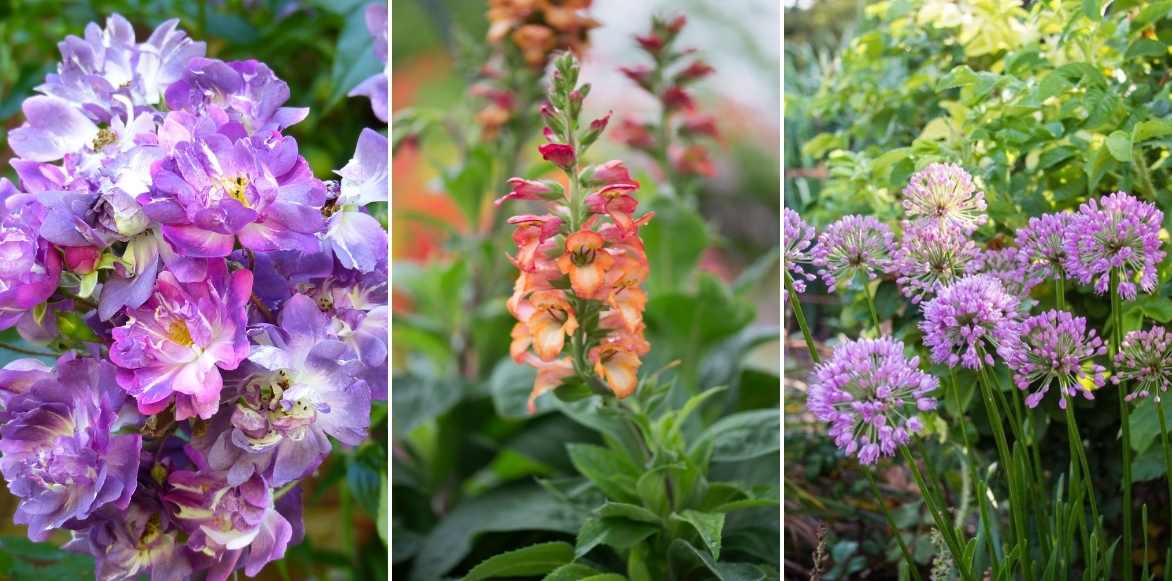
Romantic to the core, this trio of the climbing rose ‘Veilchenblau’, Digiplexis ‘Illumination Flame’, and Allium millenium.
With their tall spikes of flowers, they add rhythm and volume to a flower bed. Surround them with other summer-flowering perennials. Pair them with the blooms of sneezeweeds, Oriental poppies, foxgloves, coneflowers, and other bold-toned flower spikes like those of lupins (‘Le Chandelier jaune’, Lupin ‘Terracotta’), delphiniums, speedwells, and steppe lilies, creating striking vertical accents in warm colours. You can also pair them with cornflowers and baptisias (‘Cherries Jubilee’). The flowering of asters will accompany them right up to winter’s doorstep.
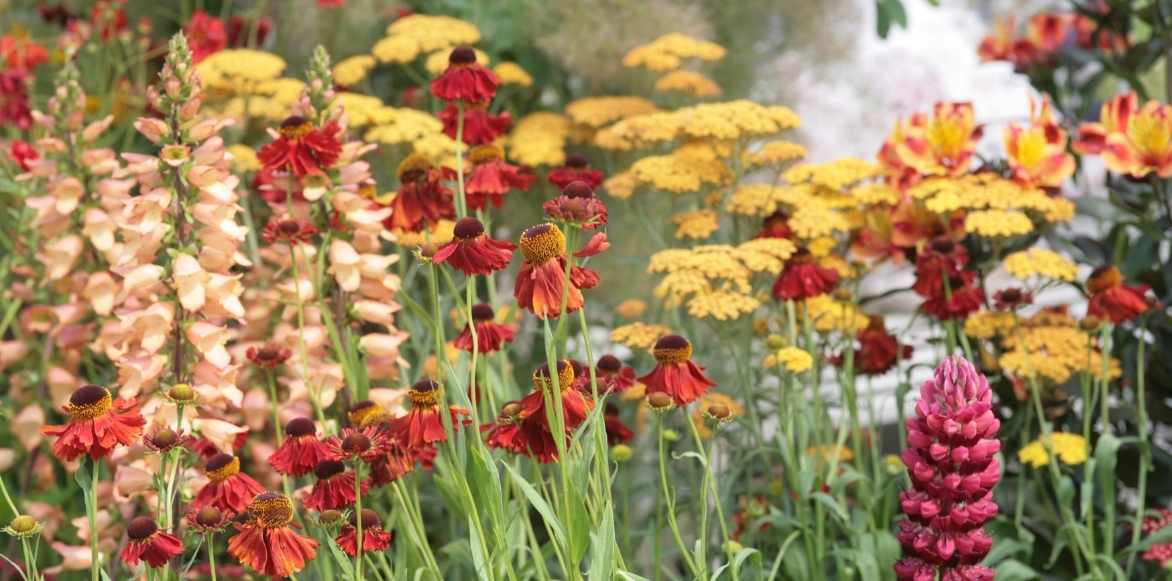
A sunny flower bed: Digiplexis Illumination ‘Chelsea Gold’, Helenium ‘Morheim Beauty’, Achillea ‘Terracotta’, and lupins
In a naturalistic scene, counterbalance their bold accents with airy clumps of ornamental grasses, mingling them with Stipa gigantea, Stipa pennata, or miscanthus.
Complete the ensemble with lower-growing plants like heucheras and campanulas.
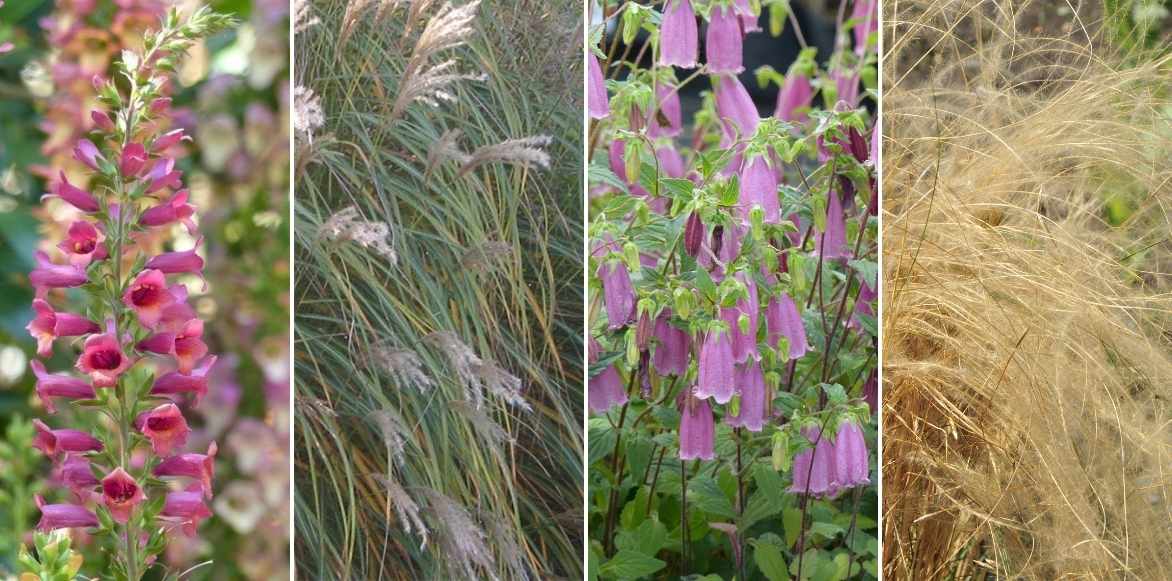
Digiplexis Illumination ‘Raspberry’, Miscanthus sinensis ‘Adagio’, Campanula ‘Ringsabell Mulberry Rose’, and Stipa pennata
Useful resources
- Discover our collection of Digiplexis and also our range of Foxgloves!
- An article by Virginie on our blog – My Favourite Perennial Foxgloves
- Our advice sheet: Choosing a Foxglove
- Subscribe!
- Contents































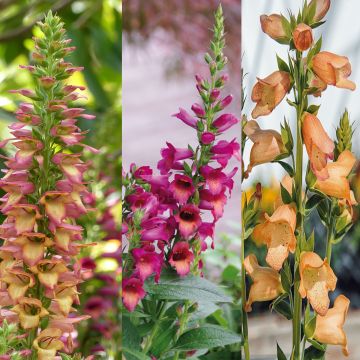
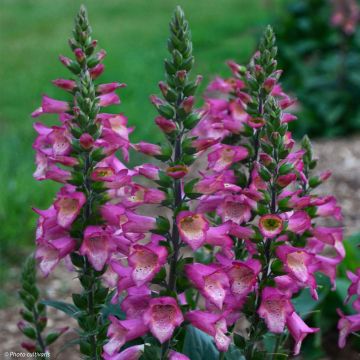




Comments